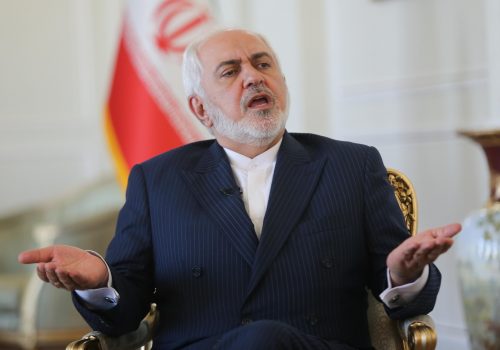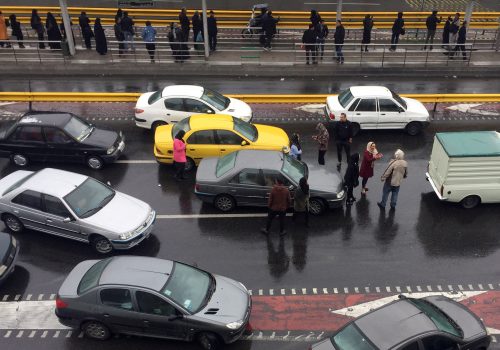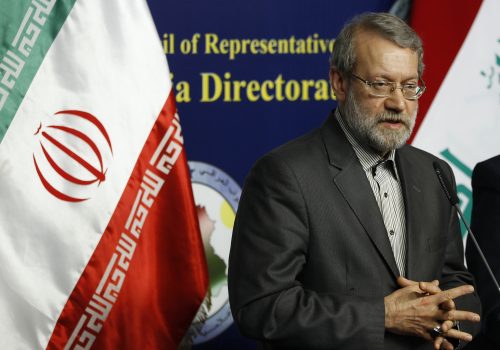Social media helps and hurts Iranian elections. Here’s how.
“The enemy takes advantage of [cyber]space to reduce people’s participation in elections through psychological methods,” said Iran’s Supreme Leader in a speech on March 21. He was discussing the role of the internet in the context of the upcoming presidential election on June 18.
“Cyberspace must be managed. There is no doubt that this possibility must be used by people and it brings freedom to people. It is also very good. However, this means must not be made available to the enemy to hatch plots against the country and against the nation,” Ayatollah Ali Khamenei added with a hint of sarcasm.
Clearly the Supreme Leader’s main concern with the internet is not infrastructure, but online content. This is ironic given the billions of dollars of investment put into the National Information Network (NIN), a domestic internet service that is able to cut off Iranians’ access to the world wide web in an instant. But there’s more to it.
The internet has always been one of the most challenging issues for the Iranian government, especially during elections. Over the past three years alone, Iran has tried to meet this challenge on numerous occasions by shutting down the internet during nationwide protests or blocking popular apps and websites. According to the 2020 Internet freedom index, Iran ranks at the bottom at fifteenth or, to put it in another way, “not free”. In this piece, I will try to examine the pros and cons of social media during every Iranian election since 2009 and speculate about the potential of a new app ahead of the June vote.
Social media since 2009
Since the 2009 presidential election, the internet has been the main free media tool to inform the international community about Iranian elections. That year was especially significant because of the post-election protests known as the Green Movement, which caused the Iranian government to understand the problematic role of the internet during periods of unrest for the first time. In May 2009, just weeks before the election, Iran blocked Facebook. When incumbent President Mahmoud Ahmadinejad was quickly declared the winner on June 12, 2009, many Iranians decried the election as fraudulent. They took to the streets in the capital Tehran and other cities in the hundreds of thousands—if not millions. Soon, dozens of videos and images poured online onto social media platforms like Twitter, YouTube, and the now banned Facebook. They showed peaceful protesters being chased, brutally beaten, and killed by security forces for the entire world to see, including the tragic death of Neda Agha-Soltan. The 2009 Green Movement was the first time the Islamic Republic reacted to a major political event in the context of the internet.
Despite the ban, four years later during the 2013 presidential election, Facebook and Twitter continued to be used by Iranians as a main tool for discussion about the candidates and the vote via circumvention tools. However, just as candidate Hassan Rouhani announced his plans to run, the conversation happened to move from social media to the messaging app Viber—the hot new app at the time. This move was the start of Facebook losing its popularity amongst the populace and the beginning of messaging apps filling its space. With the memory of 2009 still fresh in their minds, authorities also throttled the internet weeks before the election in the event of any unrest. Unable to control content on Viber, authorities resorted to blocking the app in May 2014.
Just three years later, during the 2016 parliamentary election, the main tools became photo-sharing app Instagram and messaging app Telegram. While much of the establishment’s focus, particularly the hardliners, was using traditional means to get the vote out—sermons at mosques, election campaigns, and state media—the reformist faction heavily relied on Telegram to mobilize voters. They successfully created numerous Telegram channels for reformist parliamentary candidates to get their messages out, even going as far as to design bots to promote their reformist election list, known as the “Hope List” (Iranians can vote for more than one candidate in their city). Their hard work paid off. The Hope List won 121 out of 290 seats in parliament. Then, months before the 2017 presidential election, administrators of twelve Telegram channels close to the reformists were arrested.
Telegram would continue to be used as a popular messaging and information tool by ordinary Iranians, state media, politicians, and even the Islamic Revolutionary Guard Corps and Supreme Leader. It wasn’t surprising that when protests kicked off between December 2017-January 2018 over mismanagement, corruption, and disillusion with the government, it also became a place to organize demonstrations and share information on controversial Western-based Telegram channels like Amad News. Months later in April 2018, Iranian authorities blocked Telegram, though it continues to be used by tens of millions of Iranians until this day.
By the time the 2020 parliamentary election took place, it had a dark cloud hanging over its head. The entire social media atmosphere became understandably dominated by the November 2019 anti-government protests in which security forces killed and arrested thousands. The election ended up with the lowest turnout in the history of the Islamic Republic.
Clubhouse: The new app of Iran?
Given the events of the past few years, many Iranians are now talking about abstaining in June. For a while the conversation surrounding the election appeared to be uneventful, but that notion is now being debated due to a new social media contender: Clubhouse.
The invite-only audio app is slowing making its way to the forefront of popular apps used by Iranians. Every day rooms pop up with election-related topics attended by Iranians possessing all views. What stands out are the number of Iranians inside the country engaging in these audio conversations and openly voicing their opinions and even their anger and frustrations at the clerical establishment.
It’s clear that the reformists already have an edge in Clubhouse. They are inviting high-profile political figures to join the app and participate in rooms, including members of Rouhani’s cabinet, such as Information and Communications Technology Minister Mohammad Javad Azari-Jahromi, Foreign Minister Mohammad Javad Zarif—two rumored candidates in the June vote—Abolfazl Amouei, spokesman for the parliament’s National Security and Foreign Policy Committee, and Rostam Ghasemi, another potential candidate. Clubhouse is functioning very much like a town hall—a new concept in Iran—although it does come with its problems.
There are two opposing sides sharing a common view of censorship on the nascent app and they are using the recent drop-in by Iran’s foreign minister as an example. Speaking on Clubhouse, a hardliner, who was surprised to see the room with Zarif speaking on March 31 attract eight thousand people—the maximum number of users that can join a room—said that the moderators did not give him a chance to challenge the foreign minister during the discussion. Similarly, Iranian journalists and activists inside and outside Iran felt that the moderators did not give them a chance to do the same. Interestingly, the hardliner also expressed frustration with his faction for not using Clubhouse in the same manner as the reformists. The moderator joined a couple of rooms from both sides to provide explanation and answer their questions.
What will happen to the election?
The interest and engagement in Clubhouse chat rooms are reminiscent of the exciting atmosphere I experienced on the streets of Tehran just before the 2009 election. Since the Green Movement, that same kind of environment has ceased to exist.
Having said that, even with the presence of Clubhouse, it’s unclear whether these political debates can influence or garner the interest of the Iranian people or not. While most Iranians have smartphones, Clubhouse is only available for iPhone as of now, which only 10 to 15 percent of mobile users possess. Like all things, Iranians have found a way to circumvent the problem by designing an unofficial Android version of the app, which has already been downloaded more than twenty thousand times on CafeBazaar.ir, the Iranian version of the Android Store. If an official Android version of Clubhouse is released before the June vote, it could lead to widespread election debates and potentially change the mood of some of the Iranian people, who are increasingly fed up with the status quo.
Despite serious privacy concerns about the audio app, Iranians are joining it every day to hear and share different opinions. Clubhouse is a departure from traditional social media. The voice-only feature makes users feel closer to one another. Even if the app doesn’t have any effect on the upcoming election, it is giving some Iranians something they never had: a bridge for the divide—at least for now.
Amir Rashidi is director of Internet Security and Digital Rights at Miaan Group. Follow him on Twitter: @Ammir.
Image: In this photo illustration, the Clubhouse, Instagram, Telegram and WhatsApp apps seen displayed on a smartphone screen. (Photo by Rafael Henrique / SOPA Images/Sipa USA).


